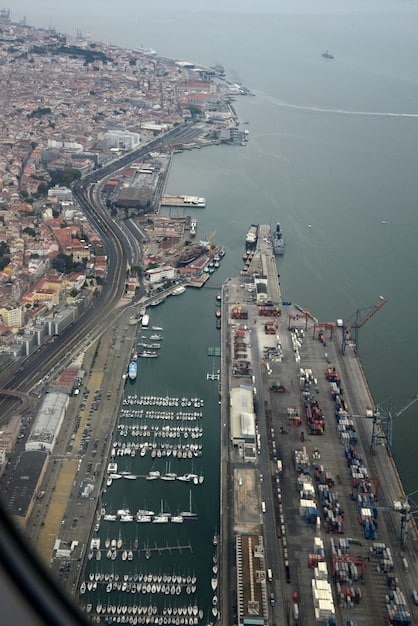Peru’s 2025 Budget: Impact on US Trade Relations

Peru’s 2025 budget is poised to significantly influence US trade relations by potentially affecting the competitiveness of Peruvian exports, altering investment incentives, and shifting the dynamics of key trade sectors between the two nations.
The unveiling of Peru’s 2025 budget has sparked considerable interest, especially concerning its potential ripple effects on international trade. One of the most pertinent questions is: How Will Peru’s 2025 Budget Affect US Trade Relations?
Understanding Peru’s 2025 Budget Priorities
To fully grasp the implications for US trade relations, it’s crucial to first understand the core priorities outlined in Peru’s 2025 budget. These priorities serve as the foundation for the nation’s economic trajectory and, consequently, shape its trade dynamics with key partners like the United States.
Let’s delve into the key areas that are slated to receive significant attention and funding.
Investment in Infrastructure
A significant portion of the Peruvian budget is often allocated to infrastructure projects. These investments can range from improving transportation networks to upgrading port facilities, which have a direct impact on trade efficiency.
Social Programs and Economic Development
These programs aim to reduce poverty and promote economic inclusion. While seemingly domestic, these initiatives can indirectly influence trade by boosting local industries.
- Impact: These priorities have the potential to modernize Peru’s infrastructure, enhancing its capacity to facilitate trade with the US.
- Risk: A misallocation of funds or inefficiencies in project execution could hinder these improvements, impacting trade negatively.
- Opportunity: Investments in education and healthcare can lead to a more skilled workforce, fostering innovation and competitiveness in trade-related sectors.
- Consideration: It’s essential for US policymakers and businesses to monitor how these budget allocations align with trade promotion efforts.
The budget’s impact on infrastructure, social programs, and key sectors will ultimately define the landscape for US-Peru trade. A balanced and strategic approach is essential to maximize the benefits.

Analyzing Key Sectors Affected by the Budget
Understanding which sectors will be most directly impacted by the 2025 budget is crucial for assessing the overall effect on US trade relations. Certain industries are more sensitive to budgetary changes, and their performance can significantly influence the trade balance between Peru and the United States.
Here, we’ll analyze the sectors expected to experience the most pronounced changes.
Agriculture
Peru’s agricultural sector is a major export to the US. Budget allocations towards irrigation, technology, and subsidies can affect the competitiveness of Peruvian agricultural products.
Mining and Energy
Mining is vital for Peru’s exports. Budgetary changes impacting environmental regulations, mining royalties, and infrastructure can shift the industry’s dynamics.
- Agriculture’s Role: The US is a significant consumer of Peruvian agricultural goods. The budget will likely boost productivity and export volumes.
- Mining Regulations: Changes in mining and energy regulations can affect the profitability of firms.
- Export Competitiveness: Peru’s ability to compete in the agricultural exports market directly impacts trade with the US.
- Sector Stability: Stability in mining and energy is pivotal for sustained economic relations, trade volume, and trade balance.
The performance of these key sectors will play a pivotal role in shaping US-Peru trade relations in 2025. Both nations must monitor and adapt to these changes to maximize the mutual economic benefits.
The Role of Trade Agreements and Policies
Trade agreements and policies play a critical role in shaping the relationship between Peru and the United States. These agreements provide the framework for trade relations, defining the rules, tariffs, and procedures that govern the exchange of goods and services.
Analyzing the existing agreements and how Peru’s budget aligns with these policies is essential.
Existing Trade Agreements
Peru and the US have existing trade agreements. These agreements reduce tariffs and set standards for intellectual property and investment. The details of these agreements shape the contours of trade.
Potential Policy Shifts
Peru’s budget might signal upcoming policy changes. These shifts could cover labor standards, sustainability requirements, or tax incentives. These changes can affect US trade.
Existing trade agreements and potential policy shifts significantly influence how Peru’s budget affects US trade relations. A proactive and informed approach is crucial.

Exchange Rate Fluctuations and Trade Dynamics
Exchange rate fluctuations are a key factor affecting the trade dynamics between Peru and the United States. When the Peruvian Sol (PEN) fluctuates against the US dollar (USD), it can significantly impact the competitiveness of exports and imports, altering the trade balance and influencing investment decisions.
Here we’ll explore how these fluctuations tie into Peru’s 2025 budget.
Impact of Exchange Rates on Exports
If the Peruvian Sol weakens against the US dollar, Peruvian exports become cheaper for US buyers. This boosts export volumes but also decreases the value of each exported product. A weaker Sol can incentivize Peruvian businesses to export.
Effect on Imports
When the Sol weakens, US goods become more expensive for Peruvian consumers. This can reduce import volumes, impacting industries that rely on imported raw materials or goods.
- Export Incentives: A weaker Sol can improve competitiveness, affecting sectors like agriculture and mining.
- Import Challenges: A stronger Sol makes US exports more competitive in Peru.
- Investment Climate: Fluctuations introduce uncertainty.
- Hedging Strategies: Firms need strategies to manage fluctuations.
Understanding exchange rate fluctuations helps businesses and policymakers make informed decisions, fostering stable and beneficial economic ties between the two nations.
The Impact on US Investment in Peru
The 2025 budget has the potential to impact US investment in Peru. Investments are a crucial component of the trade relationship. The budget’s provisions influence the investment climate, attracting or deterring foreign capital.
Let’s look at how it plays out.
Budget Incentives for Investment
The budget may offer tax breaks or subsidies for US companies investing in Peru. These incentives can make the country a more attractive destination for foreign direct investment (FDI). They stimulate economic growth and promote technology transfer.
Regulatory Changes
The budget may usher in regulatory changes influencing investments. Simplified regulations create an easier, more predictable business environment. This boosts investor confidence.
Budget adjustments significantly shape the landscape for US investment in Peru. Favorable policies can strengthen economic ties, while unfavorable changes may dampen investor enthusiasm.
Navigating Future Trade Relations
Successfully navigating future trade relations between Peru and the United States requires a proactive, informed, and adaptive approach. Both governments and businesses must stay attuned to the evolving economic landscape, policy changes, and emerging opportunities to maximize mutual benefits and minimize potential risks.
Here’s how both sides can take action.
Fostering Communication
Both countries need to promote open dialogue between government bodies, trade organizations, and businesses. Regular forums help in dealing with issues and enable stronger relationships. These ongoing discussions foster trust and cooperation.
Adopting Adaptive Strategies
The dynamics of international trade evolve continuously. Thus, businesses must create flexible plans and adapt to new challenges. Agility helps firms to weather economic changes.
By fostering robust communication, implementing adaptive strategies, and promoting sustainable practices, Peru and the US can navigate future trade relations effectively. This sets the stage for enduring prosperity for both nations.
Peru’s 2025 Budget
Brief Description
Budget Priorities
Understanding the core aims of Peru’s budget informs trade dynamics.
Sector Impact
Agriculture and Mining/Energy may shift US Trade. Stable regulation encourages long-term investments.
: Exchange rates impact the competitiveness of exports and imports. Navigating fluctuations is essential.
Investment Incentives
Subsidies influence investments. Regulatory clarity facilitates a predictable business environment.
FAQ
How does Peru’s 2025 budget impact agricultural exports to the US?
The budget can enhance productivity through investments in irrigation and technology, improving the competitiveness and volume of Peruvian agricultural exports to the US.
What regulatory changes in mining could affect US investments?
The budget introduces regulatory shifts, which may influence US investments. Simplified regulations and predictable policies create a more favorable environment for investors.
How can exchange rate fluctuations affect trade balance?
Fluctuations impact export competitiveness and import costs. A weaker Peruvian Sol can boost exports by making them cheaper, but it can also increase the cost of US imports.
What role do trade agreements play in US-Peru relations?
Trade agreements define the rules, tariffs, and procedures for the exchange of goods and services, shaping the trade relationship by reducing barriers and setting standards for trade practices.
How can businesses prepare for budget-related policy shifts?
Businesses can continuously monitor ongoing developments, engage in forums, and stay informed to make decisions. This helps to safeguard their interests and allows agile responses.
Conclusion
The 2025 Peruvian budget is likely to significantly impact trade relations with the United States, and understanding these potential shifts is crucial for businesses and policymakers. Analyzing budget allocations, trade dynamics, and investment incentives will enable stakeholders to navigate the evolving landscape and ensure sustained economic growth for both nations.
Read more content





